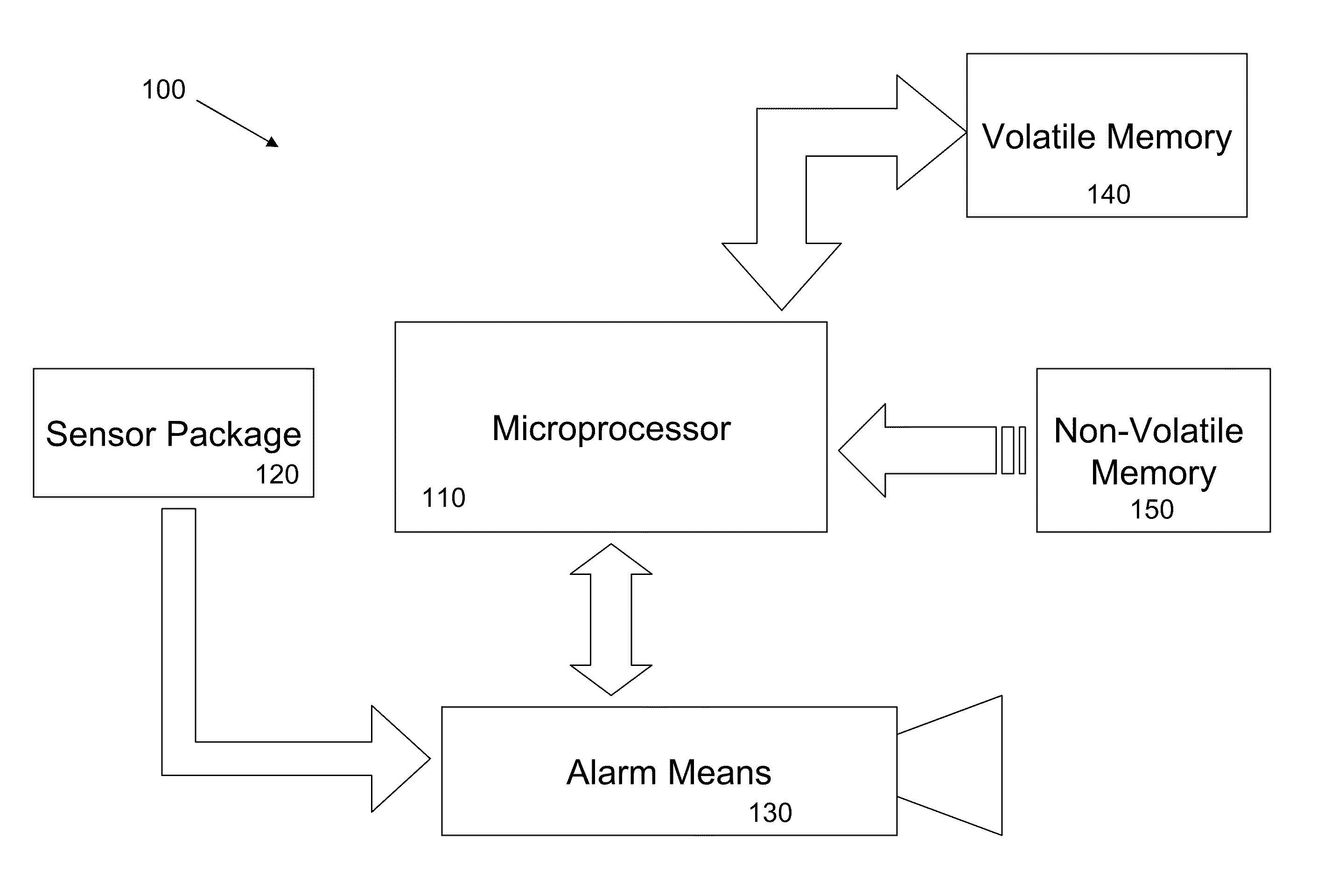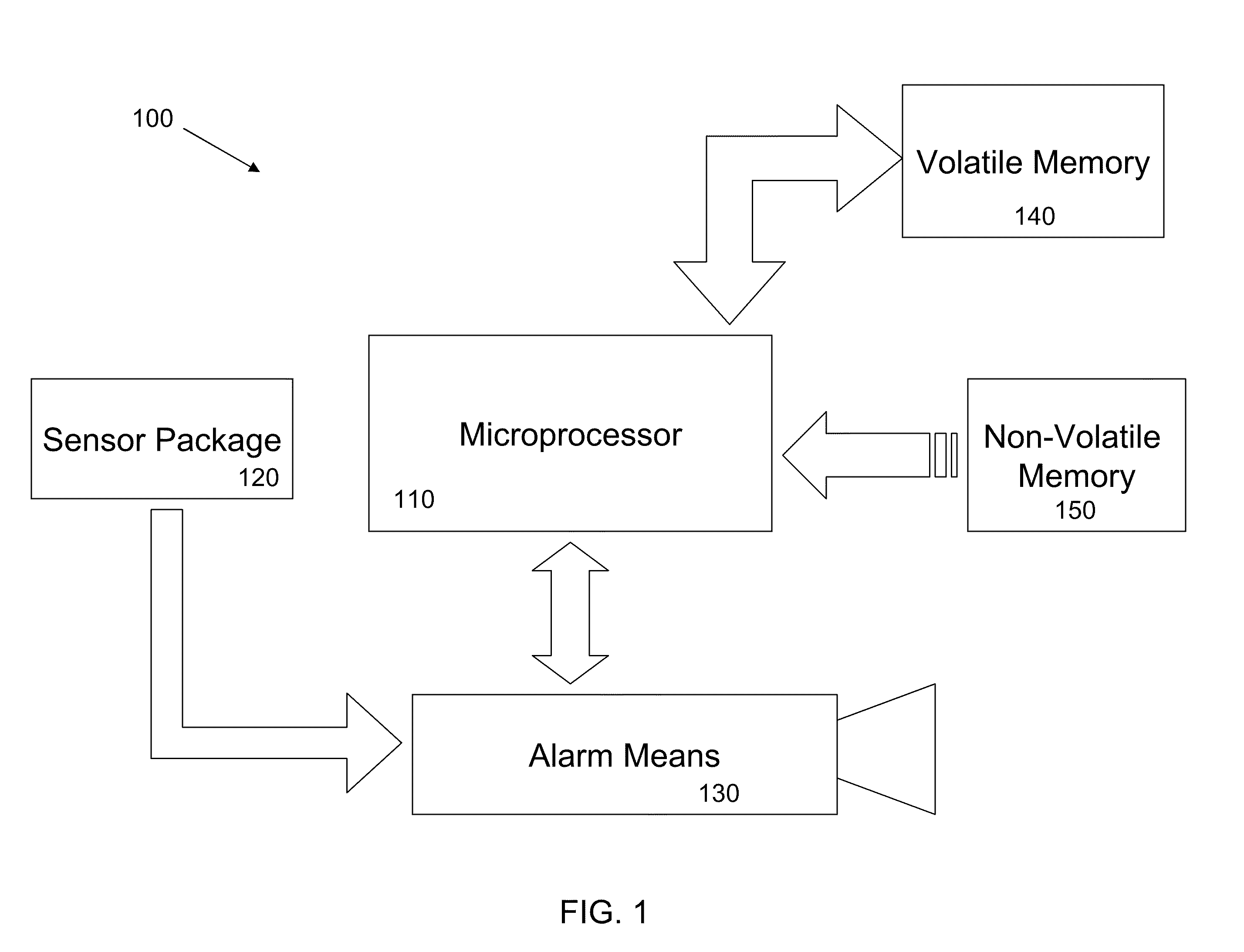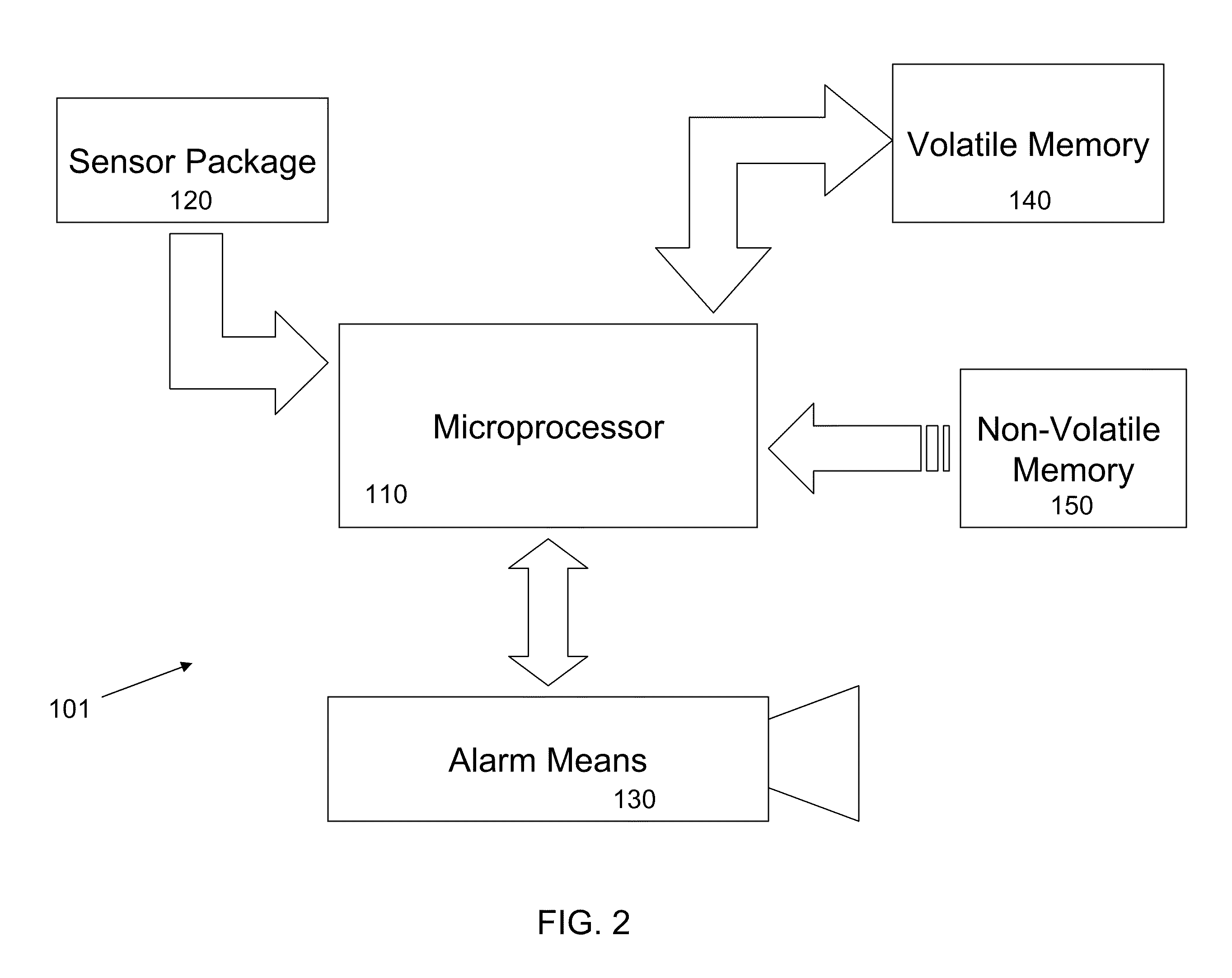Dynamic Alarm Sensitivity Adjustment and Auto-Calibrating Smoke Detection
a dynamic and automatic technology, applied in the direction of fire alarms, smoke/gas actuation of fire alarms, instruments, etc., can solve the problems that the self-adjusting system is not optimized for the detection of traditional fires, and achieve the effects of rapid measurement signal change, slow but persistent change of ionization signal, and rapid rise of the rate of ris
- Summary
- Abstract
- Description
- Claims
- Application Information
AI Technical Summary
Benefits of technology
Problems solved by technology
Method used
Image
Examples
Embodiment Construction
ition detector.
[0036]FIG. 11 is the continuation of the flow diagram of FIG. 8, FIG. 9 and FIG. 10 illustrating an embodiment of a method for providing ambient condition compensation in a hazardous condition detector
[0037]FIG. 12 is an exemplary schematic illustrating circuitry to achieve the invention using a smoke detector ASIC coupled directly to the sensor package.
[0038]FIG. 13 is a graph illustrating the unconditioned output samples of the ionization sensor (CEVRAW) as a function of time during a plurality of smoldering fire events.
[0039]FIG. 14 is a graph illustrating the conditioned output samples of the ionization sensor (CEVNEW) shown in FIG. 13 during the same smoldering fire events.
[0040]FIG. 15 is a flow diagram for an embodiment of an ionization type hazardous condition detector employing a power saving sleep feature.
[0041]FIG. 16 is a flow diagram for an embodiment of an ionization type hazardous condition detector employing the wake up feature and an ionization optimi...
PUM
 Login to View More
Login to View More Abstract
Description
Claims
Application Information
 Login to View More
Login to View More - R&D
- Intellectual Property
- Life Sciences
- Materials
- Tech Scout
- Unparalleled Data Quality
- Higher Quality Content
- 60% Fewer Hallucinations
Browse by: Latest US Patents, China's latest patents, Technical Efficacy Thesaurus, Application Domain, Technology Topic, Popular Technical Reports.
© 2025 PatSnap. All rights reserved.Legal|Privacy policy|Modern Slavery Act Transparency Statement|Sitemap|About US| Contact US: help@patsnap.com



